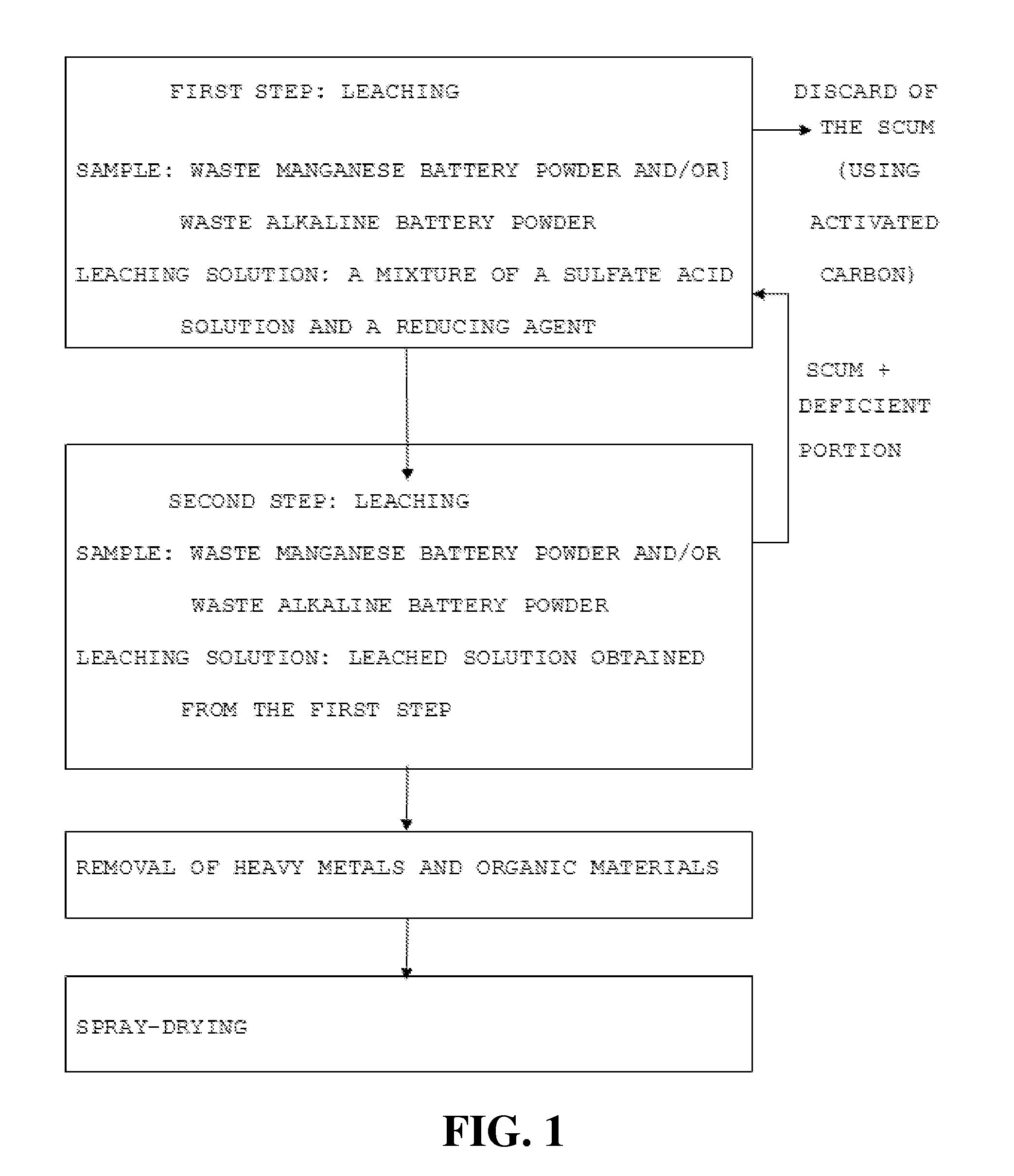Method for preparing manganese sulfate and zinc sulfate from waste batteries containing manganese and zinc
a waste battery and sulfate technology, applied in the field of preparing manganese sulfate and zinc sulfate from waste batteries containing manganese and zinc, can solve the problems of low price of prepared products including collection and conveyance costs, a load on the surrounding environment, and no battery manufacturer positively recycling waste manganese batteries. , to achieve the effect of economic efficiency and simplified process
- Summary
- Abstract
- Description
- Claims
- Application Information
AI Technical Summary
Benefits of technology
Problems solved by technology
Method used
Image
Examples
example 1
Preparation of Waste Manganese Battery Powder
[0040]According to a physical treatment device and a physical treatment flow chart of waste manganese batteries and waste alkaline batteries shown in FIGS. 1a and 2 of Korean Patent Registration No. 709,268 entitled “APPARATUS AND METHOD FOR RECYCLING WASTE MANGANESE BATTERIES AND WASTE ALKALINE BATTERIES”, a waste battery powder having a particle size in the range between 0 mesh and 8 mesh (0 mesh<particle size<8 mesh) was prepared. In this case, the content of manganese (Mn) contained in the waste battery powder was 26-29 wt % and the content of zinc (Zn) contained in the waste battery powder was 20-22 wt %.
example 2
Preparation of Manganese Sulfate and Zinc Sulfate from Waste Manganese Batteries
[0041]2-1. First Leaching Step Using a Mixture of a Sulfuric Acid Aqueous Solution and a Reducing Agent
[0042]A mixture of 4.7 L of a sulfuric acid aqueous solution of 1M and 0.3 L of hydrogen peroxide of 0.15M is was as a leaching solution, and 500 g of the waste manganese battery powder prepared in Example 1 was leached using the leaching solution. In this case, the waste manganese battery powder was leached for one hour under the leaching condition including a temperature of 60° C., a stifling rate of 250 rpm, and then the components of the leaching solution was analyzed with ICP-AES (Jobin Yvon, model JY38plus, France).
[0043]As a result, as shown in Table 1, the leaching rates of Zn and Mn were 95.3% and 86.8%, respectively. Impurities such as Fe, Cu, Ni, Al, Cd and Pb were still remained in a large amount in the leached solution.
TABLE 1Analysis result of components of the leached solution obtained fr...
PUM
| Property | Measurement | Unit |
|---|---|---|
| temperature | aaaaa | aaaaa |
| outlet temperature | aaaaa | aaaaa |
| outlet temperature | aaaaa | aaaaa |
Abstract
Description
Claims
Application Information
 Login to View More
Login to View More - R&D
- Intellectual Property
- Life Sciences
- Materials
- Tech Scout
- Unparalleled Data Quality
- Higher Quality Content
- 60% Fewer Hallucinations
Browse by: Latest US Patents, China's latest patents, Technical Efficacy Thesaurus, Application Domain, Technology Topic, Popular Technical Reports.
© 2025 PatSnap. All rights reserved.Legal|Privacy policy|Modern Slavery Act Transparency Statement|Sitemap|About US| Contact US: help@patsnap.com

